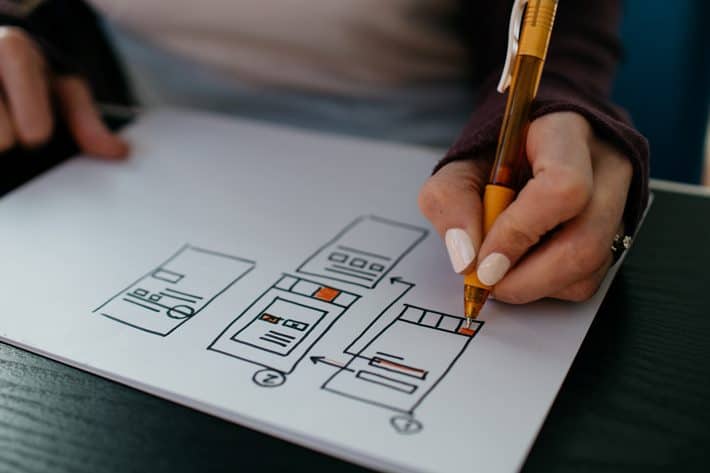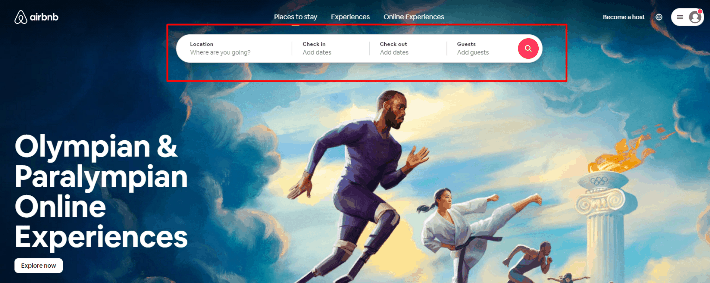
Human-Centered Design: Role, Principles, and Examples
Product design is not such an easy process. Of course, you have a great idea and the day will come when it forms the basis of your final success. But, there always comes such a point when you need to stop, analyze the market in detail and try to find optimal solutions. The central point, of course, should be the human-centered design. Why? Because success comes from customer satisfaction.
But, what does the product design process cover? Which is the point when you should work with your design team? These are the questions that usually come up during any conversation related to design. In the present article, you will get the answers to all of these questions as well as get an insight into how successful product design significantly impacts your business success.
What is Product Design?
Over the years the product design industry has greatly changed and constantly developed. We may say the same about the product design process. For the majority of people, design is simply the way how a product looks or feels. Product design covers many more than that. This process covers everything from initial market research up to the final, deliverable product. The visual part creation of the product comes even later in the overall design process. So, we may consider that the design is no longer a siloed activity that takes place after the product development process.
The Field Guide to Human-Centered Design
HCD (Human-Centered Design) is the process of designing for people. After all, the end-users are humans who should get the clearest and easy-to-understand experience when using the designed product.

As we have already understood, design thinking is a process, mindset, or approach used to solve complex problems. Known as human-centered design and engineering, this process is based on a philosophy that allows individuals or teams to design products, services, systems, and experiences that address the core needs of those who experience a problem. The process of human-centered design has many forms and approaches. Below we’ll together discuss the role, principles, and examples of human-centered product design.
The Role of Human-Centered Design
Whether we care about it or not, each of us is a designer as the choices we make shape the environment we live in.
The role of human-centric design is great in daily life. We deal with it either as a business or as an end-user. So, each opinion is essential. For instance, let’s imagine that you plan to have a mobile app or an online store. If you focus on the human-centric approach, you will be able to identify the needs and requirements in the market and try to cover them with your product.
The final goal, after all, is to increase the level of satisfaction among the end-users. So, the role of human-centered design is significantly huge. It must be easy, clean, and clear.
Human-Centered Design Principles
HCD offers solutions that fully cover the human perspective at any stage of the problem-solving process. Now let’s go on and consider the 4 fundamental principles of user-centered design. These listed principles are specified by Don Norman’s video explanation of HCD. Let’s check them out.
#1 Focus on People (Potential Users or Target Audience)
Whether you focus on designing a custom website or a progressive web app, always put yourself in those people’s shoes who’ll use your product. Take into consideration that these people are not abstract “users” but real human beings who make use of your product or service in order to reach their objectives. Take into consideration that you just offer a product that is a tool that allows them to reach their goal more efficiently. In this step, it’s essential to define the real reasons why people prefer using your product.

Usually, the identification process starts with a simple question: “who are you building this for?” Only if you are not building a product for yourself, you have to start by thinking about your audience:
- Who will use this product?
- In which context (time, place, device, etc.) will it most likely happen?
Once you identify your target audience, so-called the buyer persona, you will need to find out critical user journeys.
#2 Identify the Real Problems
Not every problem is worthy enough to be solved by such a wide significance. There are some problems that are better to be missed or work on an alternative solution. According to Don Norman, there are 2 major types of problems. These are fundamental problems and symptoms of the problem. Don Norman states that a fundamental problem is more important to solve first. He explains the point as by solving a fundamental problem, one solves a root problem that causes other issues and inconveniences.
For sure, when you conduct research or identify fundamental problems, you will need time. And very often, the product teams argue for the lack of time. Therefore, no matter how much time it takes, the process of identification of core problems should be an inevitable part of the overall design process. When designers miss on this part it may lead to such a situation when designers focus on solving the wrong problems. So, consider this process as an investment. Keep in your mind that it is better to make detailed research, as it helps to save more time and energy later during the process.
#3 Consider Everything to Be a System
When you focus on one part of a user journey (this is the local experience) do not forget about other parts of the journey. When you improve the local experience (for instance, let’s take the user sign-up procedure) it doesn’t mean that you will get a good overall user experience. Always try to focus on keeping the big and the most critical picture — what is the significant point you want your end-users to achieve using your product, or what is the final result you care about.
Let’s take an online store application that has a really smooth flow of users when they complete a product purchase but when the turn comes when they reach customer support service (for example, try to return an item they purchased recently), they deal with slow response rates. And no matter how good a product purchase experience is, the overall user experience will be considered to be poor.

So, you should offer a good user experience at any point of the process, no matter it is related to digital and physical activity.
#4 Do not Forget to Validate Your Design Decisions
Take into account that you may like a design or work with it easily as you are familiar with its navigation or flow. However, your users may face some difficulties or misunderstandings when working on your product.
There is no matter how much time you spend on your design ideation or prototyping, you should always test the quality of your solution with real people. The feedback you receive from the testing session will be a great support for you to shape a clear image of what part of your design requires improvements.
Do not try to replace testing with real users with testing with your family, friends, or team members because such a way of testing cannot be representative. Product designers, developers, or even UX researchers often face a false consensus effect. Usually, people tend to assume that others share their beliefs and will have similar behavior in a given context. In other words, product creators believe that people who would like to use a product they created are like them.
Let’s understand the real point: You are not the user! And, this is the reason why only studying with your actual target users will provide valuable insights. So, keep in your mind that any change on the design should be tested by the real users, who find your product a solution and may use it to improve their work quality and efficiency. Such real users will provide better feedback that will help you level up your product.
Human-Centered Design Examples
Now when you already know which is a human-centered design and what are its main principles, let’s go on and pass to discussing some examples of customer-first approaches that make the processes easier and more effective throughout the overall digital experience. Here we are!
#1 Easy Navigation
When visiting any web platform or installing an application, users expect to find what they need easily. If a user lands on a page and does not understand what to do for instance to get in touch with the team, then they are more likely to leave because of confusion and unclear navigation. Deeply consider this point as it is the first impression of the users which helps to decide to stay or leave the page.
#2 Uncomplicated Usability
You should offer features and solutions that are maximally useful for the users. For instance, ask as much information as is required to complete specific actions. Airbnb home page is a bright example of this.

It is easy, quick, and effective. Such a user interface helps the users immediately complete processes, and find their required info providing only minimal details.
#3 Keep It Minimal
Users are always looking for a great experience. A good UX design is a combination of elements and features that do not confuse the target users with unnecessary elements, colors, or styles. It is recommended to present a compact interface that does not offer additional and unnecessary features and elements. Once you do, the risk to confuse the users and complicate their experience increases.
#4 Adaptive Interface
When navigating through a digital platform some people pay great attention to the visual influence. For instance, people who are visually impaired prefer to see similar colors next to each other. This may refer, for instance, to products in an online shop. The color selection and contrast should fit the visual preferences of people of every sort. Or let’s consider another example, the designers have found a solution for. They have prepared some details and elements that make the interface easier to understand and use. When the users add any item to the cart, the option to increase the number of products is visible in the main interface, without going to the Cart option to increase.
#5 Accessibility
One of the most critical points is to make your digital platform accessible for everybody regardless of the type of device they use. Make your design responsive so that the mobile version of your page looks as great as on the wide-screen desktop. Both the web and mobile versions of your website or application must have a great user interface to make it easier for the users to quickly find their acquired functions or information.

#6 SiteMaps
This is a map of the website that makes it easier both for search engines as well as users to find a general idea about the overall website structure and page content. A sitemap includes any link available on the website and is used to offer easy and stress-free navigation.
To Sum Up
As we have already understood, human-centered design is very essential for a successful product. In order to get such an experience, you will need to avoid design mistakes and focus on the preferences of the potential users. Keep in mind that the first impression is very essential. Make sure users immediately get your message and easily use your platform. Following these rules many businesses have been provided with a good experience and performance, leading to successful results. Join the lucky ones.

Article by:
Vera Mirzoyan
Published on:
July 27, 2021
Last updated on:
August 10, 2021


